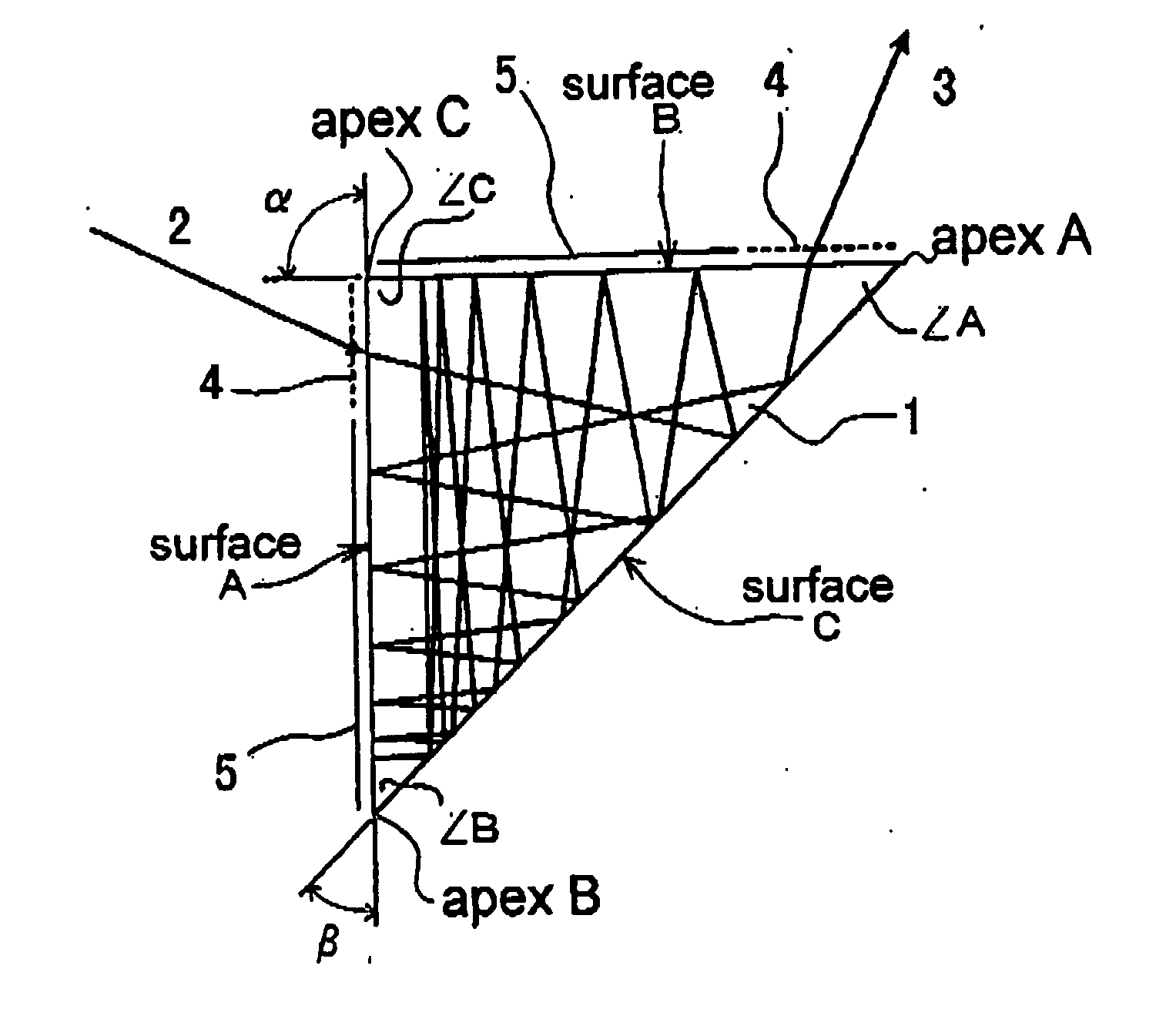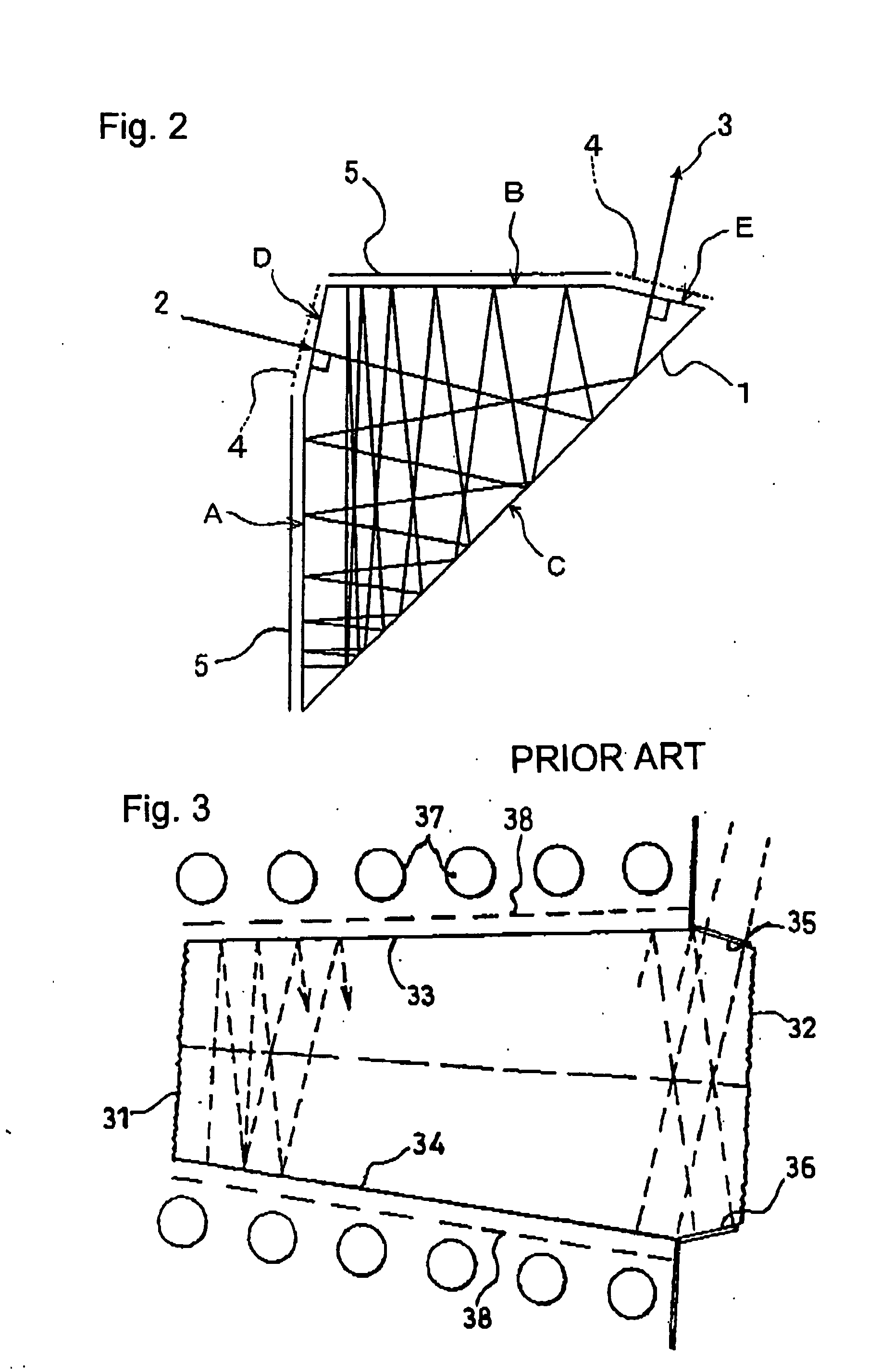Slab type solid-state laser medium and slab type nonlinear optical medium each using light path formed by multiple reflection caused by three reflecting surfaces
a laser medium and slab type technology, applied in the direction of optical resonator shape and construction, active medium materials, instruments, etc., can solve the problems of low energy conversion efficiency of the lamp itself from electricity to light, deficiency of the device excitation type in utilization efficiency of excitation light, emission spectrum, etc., to eliminate the burning of spatial holes, high output, and high dimensional accuracy
- Summary
- Abstract
- Description
- Claims
- Application Information
AI Technical Summary
Benefits of technology
Problems solved by technology
Method used
Image
Examples
embodiment 1
[0071] First, an embodiment of this invention will be described with reference to FIG. 1. The solid-state laser medium (laser rod) of this invention, as illustrated by a plan view in FIG. 1(a) and by a perspective view in FIG. 1(b), is a slab 1 of the form of a triangular prism using a Nd:YAG crystal. The slab has an upper and a lower triangular surface and quadrangular side face A (hereinafter described as “Surface A”), side face B (hereinafter described as “Surface B”) and side face C (hereinafter described as “Surface C”) lying orthogonal thereto. Surfaces A, B and C are optically polished surfaces which are furnished thereon an antireflection coating and a reflecting film depending on the purposes of use of the relevant positions. The bottom face of the slab is bonded tightly to a heat sink 6 for cooling. On at least either of Surface A and Surface B which include a vertex A of an angle a approximating the right angle, a part for injecting the laser beam as an incident light 2 o...
embodiment 2
[0114] In the disposition of a light path in which the incident light and the emitted light of the solid-state laser medium coincide, a monolithic solid-state laser is formed by altering the injection and emission parts of Surface A to a spherical surface 12 having attached thereto a diffusion shell 13 as illustrated in FIG. 21. The monolithic solid-state laser can be similarly formed by furnishing Surface B (not Surface A) with a spherical output part. It is evident that the monolithic solid-state laser is similarly formed by imparting a flat surface or a spherical surface to the surfaces corresponding to Surface D or Surface E added anew to the side face of the slab as the incident part and the emission part of Surface A and Surface B of FIG. 2 and altering them to the surfaces having a diffusion shell and a highly reflecting film attached thereto, respectively.
embodiment 3
[0115] By connecting the solid-state laser media in series as illustrated in FIG. 22 or FIG. 23, it is made possible to obtain a still higher laser gain and a laser beam of high output. It is evident that a ring laser can be easily configured by so adding reflectors to the configuration of FIG. 22 or FIG. 23 as to circulate the light path therethrough.
PUM
| Property | Measurement | Unit |
|---|---|---|
| angles | aaaaa | aaaaa |
| Brewster angle | aaaaa | aaaaa |
| Brewster angle | aaaaa | aaaaa |
Abstract
Description
Claims
Application Information
 Login to View More
Login to View More - R&D
- Intellectual Property
- Life Sciences
- Materials
- Tech Scout
- Unparalleled Data Quality
- Higher Quality Content
- 60% Fewer Hallucinations
Browse by: Latest US Patents, China's latest patents, Technical Efficacy Thesaurus, Application Domain, Technology Topic, Popular Technical Reports.
© 2025 PatSnap. All rights reserved.Legal|Privacy policy|Modern Slavery Act Transparency Statement|Sitemap|About US| Contact US: help@patsnap.com



